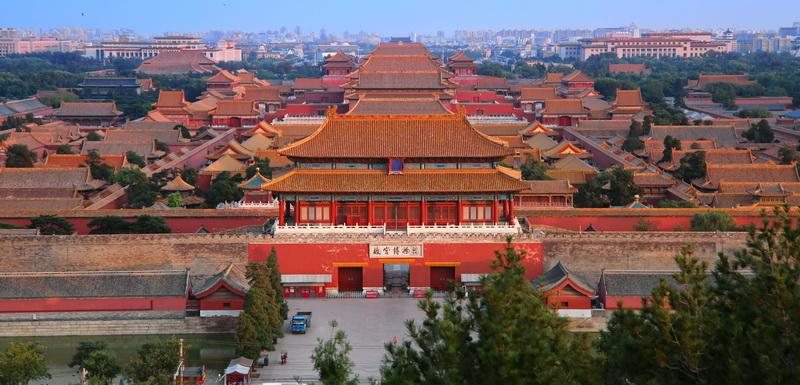Welcome to the How to Visit China Site to plan your lifetime trip to China. Well, determining the “best” places to visit in China is subjective and can depend on individual interests.
However, here are some highly recommended destinations for first-timers that offer a mix of natural beauty, cultural heritage, and historical significance:
Beijing
Beijing, the capital city of China, is a bustling metropolis with a rich history, iconic landmarks, and a vibrant mix of traditional and modern elements. Here are some key points about Beijing:
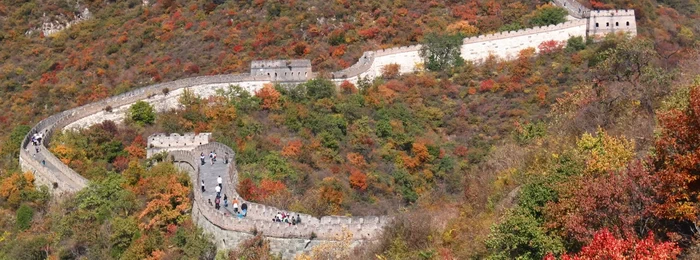
Beijing is home to several world-famous attractions. The most popular is the Forbidden City ( the Palace Museum), an imperial palace complex that was the residence of Chinese emperors for nearly 500 years. Other must-visit landmarks include the Temple of Heaven, Summer Palace, and the iconic Tiananmen Square, one of the largest public squares in the world.
Beijing is a gateway to the Great Wall, one of the Seven Wonders of the World. Several sections of the wall are easily accessible from the city, including the popular Badaling and Mutianyu sections.
Xi’an
Xi’an, located in the northwest part of China, is one of the country’s oldest and most historically significant cities. Here is some key information about Xi’an:

Xi’an is renowned for the Terracotta Army, an archaeological marvel and UNESCO World Heritage site. Discovered in 1974, the Terracotta Army consists of thousands of life-sized sculptures of soldiers, horses, and chariots, created to accompany the first Emperor of China, Qin Shi Huang, in the afterlife.
Xi’an boasts one of the best-preserved city walls in China. The ancient city wall dates back to the Ming Dynasty and provides panoramic views of the city. Visitors can rent bicycles or take a leisurely walk along the wall.
Xi’an has a vibrant Muslim Quarter, also known as the Hui Quarter, which showcases a unique blend of Chinese and Islamic culture. The area is filled with bustling markets, street food stalls, and the famous Great Mosque, a significant Islamic architectural masterpiece.
Xi’an offers a fascinating blend of history, culture, and natural beauty, making it a must-visit destination for travelers to China.
Shanghai
Shanghai, a bustling metropolis on the eastern coast of China, is a global financial and cultural hub. Here is some key information about Shanghai:
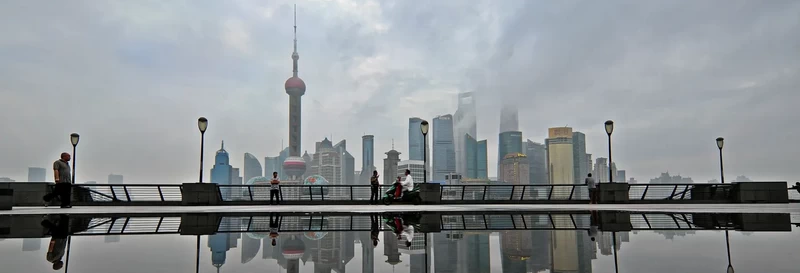
As one of Shanghai’s most iconic landmarks, the Bund is a waterfront promenade that offers stunning views of the city skyline. It showcases historical European colonial architecture mixed with modern skyscrapers.
Standing at 632 meters, the Shanghai Tower is the second-tallest skyscraper in the world. Visitors can enjoy panoramic views of the city from its observation deck.
Yu Garden: This traditional Chinese garden is a tranquil oasis in the heart of Shanghai’s bustling Old Town. It features beautiful pavilions, bridges, and rockeries, showcasing classical Chinese gardening techniques.
Shanghai seamlessly blends modernity with traditional elements, offering visitors a dynamic and multicultural experience.
Hangzhou
Hangzhou, located in eastern China, is a city renowned for its natural beauty, historic sites, and cultural significance. Here is some key information about Hangzhou:
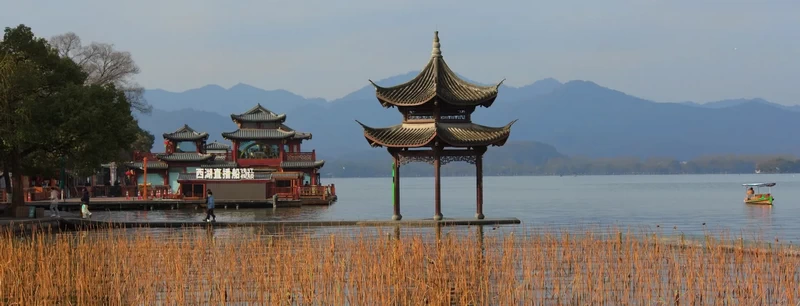
Hangzhou’s most famous attraction is West Lake, a UNESCO World Heritage site. Known for its scenic beauty, West Lake is surrounded by gardens, causeways, temples, and pagodas. Visitors can take boat rides, stroll along the lake’s paths, or simply enjoy the picturesque views.
Hefang Street: This popular pedestrian street is known for its traditional shops, teahouses, and boutiques. Visitors can browse through local handicrafts, sample local snacks, and experience the charm of ancient Hangzhou.
Hangzhou is famous for its Longjing tea, also known as Dragon Well tea. Visitors can explore the lush tea fields, learn about tea production, and taste the high-quality Longjing tea, known for its delicate flavor.
Hangzhou’s natural landscapes, cultural heritage, and tea culture make it a captivating destination for travelers looking to explore the beauty of eastern China.
Suzhou
Suzhou, located in the eastern part of China near Shanghai, is known as the “Venice of the East” due to its beautiful canals, traditional gardens, and ancient water towns. Here is some key information about Suzhou:
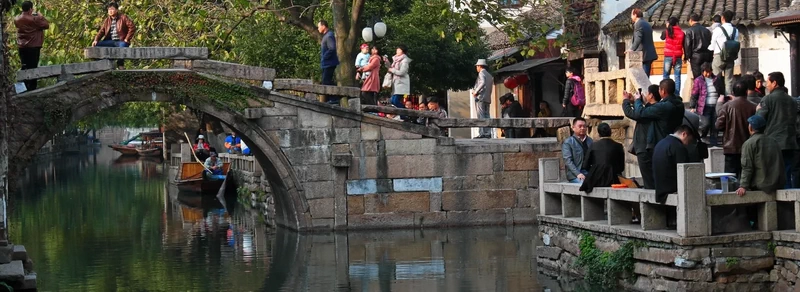
Suzhou is famous for its meticulously designed classical gardens, which are recognized as a UNESCO World Heritage site. These gardens, including the Humble Administrator’s Garden, Lingering Garden, and Master of the Nets Garden, showcase traditional Chinese landscaping techniques, pavilions, bridges, and peaceful water features.
Suzhou is home to several picturesque water towns, such as Zhouzhuang, Tongli, and Luzhi. These ancient towns are characterized by their intricate canal networks, stone bridges, traditional architecture, and charming narrow alleyways.
Suzhou is renowned for its silk production, and visitors can explore silk workshops and museums to learn about the history, craftsmanship, and techniques of silk production. They can also purchase high-quality silk products such as clothing, scarves, and accessories.
Suzhou’s blend of history, culture, and natural beauty make it a charming destination for travelers seeking traditional Chinese experiences.
Huangshan
Huangshan, also known as Yellow Mountain, is a mountain range located in Anhui Province, eastern China. It is renowned for its stunning natural scenery, breathtaking peaks, and unique cloud formations. Here is some key information about Huangshan:
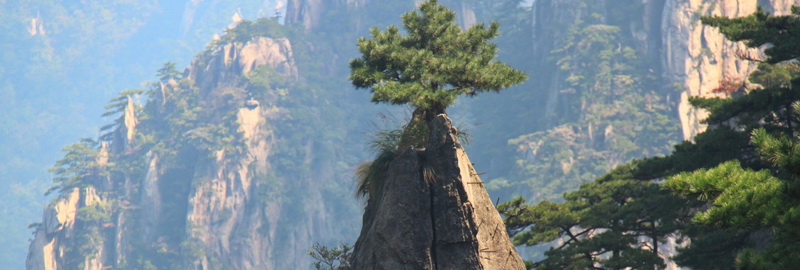
Huangshan was inscribed as a UNESCO World Heritage site in 1990 for its outstanding cultural and natural values. It has been a source of inspiration for countless Chinese painters, poets, and scholars throughout history.
Huangshan is known for its “Four Wonders,” namely the strange pine trees, unique rock formations, seas of clouds, and hot springs. Iconic peaks and spots include the Heavenly Capital Peak, Lotus Flower Peak, Dispelling Cloud Pavilion, and the Flying-over Rock.
Visiting Huangshan provides a memorable experience for nature lovers, photographers, and those looking to immerse themselves in China’s rich cultural and natural heritage.
Guilin
Guilin, located in the Guangxi Zhuang Autonomous Region in southern China, is known for its breathtaking karst landscape, picturesque scenery, and unique cultural heritage. Here is some key information about Guilin:
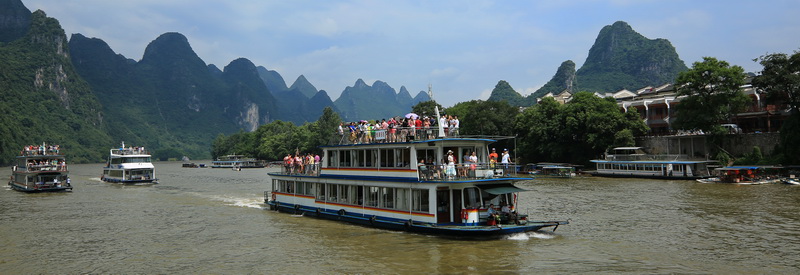
Karst Landscape: Guilin is famous for its stunning karst mountains and limestone peaks that rise from the surrounding countryside. The landscape is characterized by dramatic hills, caves, rivers, and rice terraces, creating a picturesque and surreal environment.
Li River: The Li River is one of Guilin’s most iconic attractions. Taking a cruise along the Li River offers visitors the opportunity to witness the region’s breathtaking scenery, with limestone peaks reflecting in the clear waters.
Reed Flute Cave: Known as the “Palace of Natural Arts,” the Reed Flute Cave is a mesmerizing limestone cave filled with colorful stalactites, stalagmites, and rock formations that resemble various shapes and creatures. Illuminated with colorful lights, it’s a magical sight to behold.
Guilin’s natural scenery, unique cultural heritage, and opportunities for outdoor activities make it a popular destination for tourists from around the world. It offers a combination of natural wonders and cultural experiences that are sure to captivate visitors.
Lijiang
Lijiang, located in the Yunnan Province of southwestern China, is a UNESCO World Heritage site known for its well-preserved ancient town, unique Naxi culture, and stunning natural landscapes. Here is some key information about Lijiang:
Ancient Town of Lijiang: The Ancient Town of Lijiang is the heart of the city and a major tourist attraction. It is characterized by cobblestone streets, traditional Naxi-style architecture, and beautiful canals. Visitors can wander through the narrow lanes, explore charming shops, and admire the traditional wooden houses.
Tiger Leaping Gorge: Located just a few hours’ drive from Lijiang, Tiger Leaping Gorge is one of the deepest and most spectacular river canyons in the world. Hikers can trek along the high trails, enjoy breathtaking views of the rushing Jinsha River, and immerse themselves in the dramatic landscapes.
Jade Dragon Snow Mountain: Also known as Yulong Snow Mountain, Jade Dragon Snow Mountain is an awe-inspiring range of mountains that can be seen from Lijiang. It offers stunning views, ancient glaciers, alpine meadows, and opportunities for hiking, cable car rides, and even snow sports during the winter months.
Lijiang’s combination of ancient architecture, traditional culture, stunning natural scenery, and unique ethnic identity make it a captivating destination, allowing visitors to immerse themselves in the rich history and diverse landscapes of southwest China.
Zhangjiajie
Zhangjiajie, located in the Hunan Province of central China, is renowned for its dramatic landscapes, towering sandstone pillars, and lush forests. It gained international fame after being the inspiration for the scenery in the movie “Avatar.” Here is some key information about Zhangjiajie:
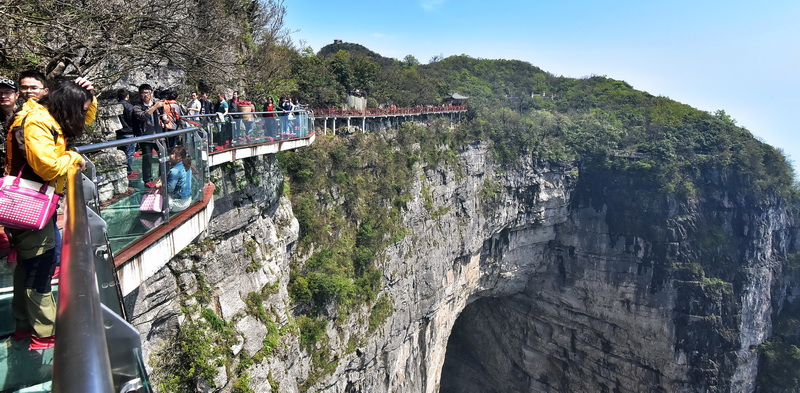
Zhangjiajie National Forest Park: Zhangjiajie National Forest Park is perhaps the most famous attraction in the area. It is known for its towering sandstone pillars, deep canyons, and dense forests. Visitors can explore the park through a network of walking trails, glass walkways, and scenic cable cars.
Avatar Hallelujah Mountain: The towering sandstone pillar that is famously associated with the movie “Avatar” has become one of the symbols of Zhangjiajie. Known as the Hallelujah Mountain, it attracts visitors who are eager to see the real-life representation of the movie’s floating mountains.
Tianzi Mountain Nature Reserve: Tianzi Mountain Nature Reserve offers stunning panoramic views of the sandstone peaks and surrounding valleys. Visitors can take a cable car to the mountaintop, or opt for a challenging hike to enjoy the breathtaking scenery.
Zhangjiajie’s stunning landscapes, unique sandstone pillars, and cultural experiences make it an extraordinary destination for nature lovers, outdoor enthusiasts, and fans of the “Avatar” movie. It promises a memorable and otherworldly experience in the heart of China.
Chengdu
Chengdu, located in the Sichuan Province of southwestern China, is known for its rich history, vibrant culture, delicious cuisine, and being the home of the giant pandas. Here is some key information about Chengdu:

Chengdu is famous for being the home of the giant pandas. The Chengdu Research Base of Giant Panda Breeding is a must-visit attraction, where visitors can observe these adorable creatures in a natural habitat.
Located just outside Chengdu, the Leshan Giant Buddha is the largest stone Buddha statue in the world. Carved into a cliffside overlooking a river, it is a UNESCO World Heritage site and a fascinating cultural and historical monument.
Chengdu is renowned for its spicy and flavorful Sichuan cuisine. The city is known for dishes such as mapo tofu, kung pao chicken, hot pot, and spicy fish. Food lovers can explore the local markets and street food stalls to indulge in authentic Sichuan flavors.
Chengdu’s combination of cultural attractions, gastronomic delights, and lovely natural surroundings make it a captivating destination for travelers seeking a blend of history, art, nature, and culinary adventures.
Lhasa
Lhasa, located in the Tibet Autonomous Region of China, is the capital city and spiritual heart of Tibetan Buddhism. It is known for its rich cultural heritage, stunning monasteries, and the iconic Potala Palace. Here is some key information about Lhasa:

Potala Palace: The Potala Palace is the centerpiece of Lhasa and one of Tibet’s most iconic landmarks. This majestic palace, perched on a hill, was the winter residence of successive Dalai Lamas. It is known for its exquisite Tibetan architecture, stunning frescoes, sacred halls, and panoramic views of the city.
Jokhang Temple: Jokhang Temple is one of the holiest sites in Tibetan Buddhism. Located in the heart of Lhasa, it is a pilgrimage destination for Tibetan Buddhists. The temple houses various sacred relics, including a revered Buddha statue, and offers a glimpse into Tibetan religious practices and rituals.
Barkhor Street: Barkhor Street is a bustling pilgrimage circuit surrounding Jokhang Temple. This ancient street is lined with shops, vendors, and prayer wheels. It is a vibrant hub where locals and tourists come together to shop, socialize, and immerse themselves in the unique atmosphere of Lhasa.
Lhasa’s rich religious heritage, breathtaking architecture, and vibrant cultural traditions make it an unforgettable destination for travelers seeking a window into Tibetan Buddhism and Tibetan culture.
Guangzhou
Guangzhou, also known as Canton, is the capital city of Guangdong Province in southern China. It is a vibrant metropolis that combines traditional culture with modern development. Here is some key information about Guangzhou:
Canton Tower: Canton Tower, also known as Guangzhou TV Tower, is an iconic landmark and one of the tallest towers in the world. Visitors can take a ride to the observation deck to enjoy breathtaking views of the city skyline and the Pearl River.
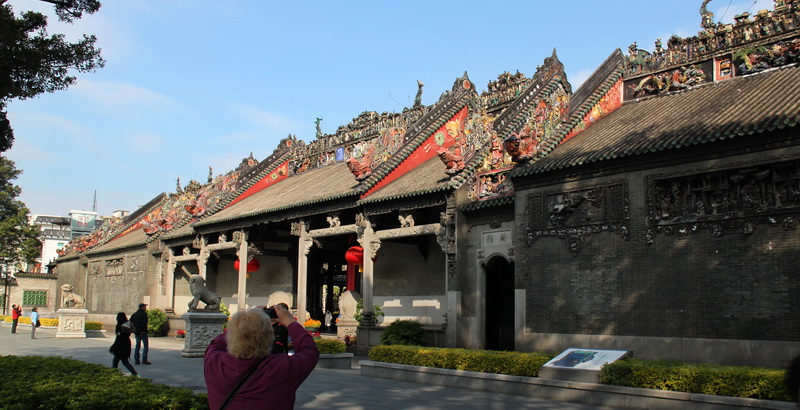
Chen Clan Ancestral Hall: Chen Clan Ancestral Hall is a magnificent complex that showcases traditional Chinese architecture and the craftsmanship of the Guangdong region. It now serves as the Guangdong Folk Art Museum, exhibiting traditional art, craftwork, and historical artifacts.
Shamian Island: Shamian Island is a charming and historic island district located in the heart of Guangzhou. It is known for its well-preserved colonial architecture, leafy squares, and tree-lined streets. Visitors can explore the island’s ornate buildings, art galleries, cafes, and waterfront promenades
With its rich history, cultural heritage, modern attractions, and gastronomic delights, Guangzhou offers a dynamic and captivating experience for visitors exploring the southern region of China.
Hong Kong:
Hong Kong, officially known as the Hong Kong Special Administrative Region of the People’s Republic of China, is a vibrant and bustling city situated on the southern coast of China. It is renowned for its stunning skyline, multicultural atmosphere, and unique blend of eastern and western influences. Here is some key information about Hong Kong:
Victoria Harbour: Victoria Harbour is a renowned natural harbor that separates Hong Kong Island from the Kowloon Peninsula. It offers spectacular panoramic views, a Symphony of Lights show every evening, and is a bustling hub of activity with ferries, cargo ships, and traditional junk boats.
Skyline and Architecture: Hong Kong is famous for its iconic skyline, characterized by towering skyscrapers, gleaming glass facades, and dazzling city lights. The skyline showcases architectural marvels such as the International Commerce Centre (ICC), Central Plaza, and the Bank of China Tower.
The Peak: Victoria Peak, often referred to as The Peak, is the highest point on Hong Kong Island. It offers breathtaking views of the city, surrounding islands, and Victoria Harbour. Visitors can ride the Peak Tram, enjoy scenic walks, dine at restaurants, and take in panoramic vistas from the Sky Terrace 428.
Hong Kong’s vibrant energy, cultural richness, culinary delights, and bustling cityscape make it an enticing destination for visitors from around the world. It seamlessly blends tradition and modernity, providing an unforgettable experience for travelers.
Remember, China is a vast country with numerous charming places with countless attractions, so consider exploring beyond these destinations as well.
If you have any questions or queries, then please feel free to drop us a line.

